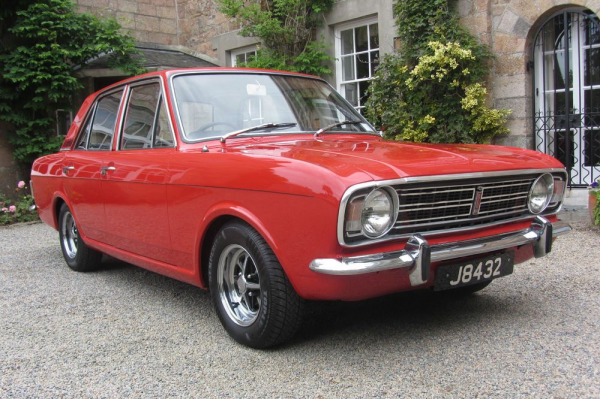
HISTORY OF THE FORD LOTUS CORTINA
Lotus Cortina is the commonly used term for the Ford Cortina Lotus, a high-performance sports saloon, which was produced in the United Kingdom from 1963 to 1970 by Ford in collaboration with Lotus cars.
The original version, which was based on the Ford Cortina Mk 1, was promoted by Ford as the “Consul Cortina developed by Lotus”, with “Consul” later being dropped from the name. The Mk 2 was based on the Ford Cortina Mk 2 and was marketed by Ford as the “Cortina Lotus”.
There were 3,306 Mark 1 and 4,093 Mark 2 Lotus Cortinas produced.
Mk 2
Ford wanted to change a few things for the Mk2, the Mk1 had done all and more than they could expect in competition, but the public linked its competition wins with Lotus and its bad points with Ford.
Ford still wanted to build a Mk2 Lotus and compete with it, but Lotus were moving from Cheshunt to Hethel so it was a bad time for them to build another model.
Ford were also concerned with the unreliability of the Lotus built cars. So a decision was made at Ford that; to continue with its competition drive and make the car more cost effective they would make the car at Dagenham themselves, alongside the other Cortinas.
So the Mk2 had to be much easier to build than the Mk1 so it could be made alongside Mk2 GT production, just with a different engine and suspension.
The Mk2 took a while to appear, first appearing in 1967.
The main difference was the choice of colours and the lack of a stripe, although most had them fitted at Ford dealers at extra cost.
The only cosmetic changes made were a black front grille, 5.5J x 13 steel wheels and Lotus badges on rear wings and by the rear number plate.
The badge on the front grille was an option at first.
Unlike the Mk1, the Mk2 was also made in left hand drive from the start of production.
The Mk2 Cortina Lotus also gained an improved and more powerful (109 bhp (81 kW; 111 PS)) engine, which was formerly supplied as the special equipment engine option on Lotus Elan and the Cortina Lotus Mk1.
The gearbox ratios remained 2000E ones but the car now used the Mk2 GT remote-control gear change.
The car also had a different final drive of 3.77:1 rather than 3.9:1.
The Mk2 was a wider car than the Mk1, so although they looked the same, the steel wheels had a different offset so as not to upset the tracking, and radial tyres were now standard.
Another attraction was the larger fuel tank. The spare wheel could then be mounted in its wheel well, but the battery remained in the boot to aid weight distribution.
The only real difference to the engine bay was the air cleaner mounted on top of the engine.
The interior was almost identical to a GT.
The Mk2 did exactly what Ford wanted, it was far more reliable whilst still quick enough to be used in competition, until it was replaced by the Escort Twin Cam.
The car did receive a few updates, but none as urgent as the Mk1’s.
Only a few months after production started, the Lotus badge on the rear panel was cancelled and a new TWIN CAM badge was fitted under the Cortina script on the boot lid. Despite the badge changes, Ford UK continued to market the model as the “Cortina Lotus”.
The new combined clock and centre console were fitted.
In late 1968 the entire Mk2 range received some cosmetic changes; for the Lotus, this meant that the 4 dials on top of the dash were brought down and made part of the dash.
An internal bonnet release and a more conventional mounting for the handbrake were also phased in.
A new single-rail gearshift mechanism was used. The car stayed in production until 1970.
The Cortina Lotus was marketed in Europe as the Cortina Twin Cam in 1969/70
Two 4-door versions were supplied to the Mid-Anglia Constabulary for evaluation as use as a fast patrol and pursuit car by British Police forces. The trial never went beyond the two vehicles, which are both still in existence.


